Originally posted here:
http://www.maxvelocitytactical.com/2015/01/student-review-combat-team-tactics-january-2015-benny/
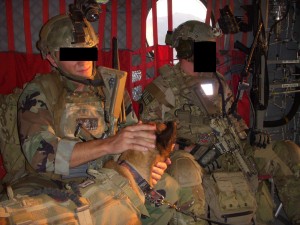
After Action Review: Max Velocity Combat Team Tactics, January 2015: Benny
I'm currently serving in the United States Army on Active Duty. I attended the January Combat Team Tactics (CTT) class and will put to paper my thoughts on the course in an attempt to answer questions that other Veterans and Service Members may have when considering the course. It will be a useful review for anyone however as the basics always apply to everyone. Max’s Resume and professional course offerings stand alone. However, well thought out reviews are important for anyone who is considering spending their hard earned money on training. It can be difficult to accurately judge the caliber of a school in a field that has its fair share of dogma, marketing, and general internet hype. I will do my best to review the course I have taken in light of the experience and training that I have gained in the U.S. Army, but the lessons I took from the course will be applicable to anyone who cares to read it.
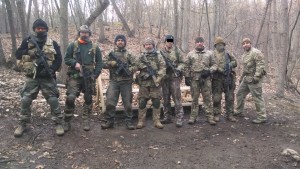
I became acquainted with Max Velocity Tactical while I was deployed to Afghanistan. I read Max’s books and blog posts in order to hone the training I was providing to my Afghan counterparts. As well, I am always looking for tactical insight to apply to real world missions. I push myself and others to always be a student of tactics. No amount of study is to great, or too focused, if it is towards killing the enemy and saving lives. You don't have to be fighting a war to undertake the same study. Anyone who may have to use a rifle in self defense can benefit from the study of tactics as they can all be distilled to proper fundamentals. Furthermore, if one is to do the same with at least one buddy, they must study tactics as not doing so is negligent.
Let's start from the very beginning though: If one truly believes in their own self-defense, then they ought to possess a firearm and competent knowledge of its use. This isn't a political discussion, you don't have to own a gun if that “isn't your thing”. But even having that choice is predicated on living in a country where the peace is maintained by those capable of applying lethal force. By and large, it is the only way to negate the physical disadvantages that one may have against a predator. No matter how physically able we may be, we all get old, or sick, or were born handicapped.
The argument for armed self defense is founded in the necessity to seek every tactical advantage in the hope that we will survive, and ensure the survival of those who cannot defend themselves, namely our families and loved ones. Following the same argument it is apparent that, should the situation be so dire, we can increase our advantage by increasing our numbers. As we increase our individual skills, and reach out to like minded individuals, we must seek sound tactical training to realize every advantage that our numbers have. Whatever your thoughts on the matter Light Infantry tactics apply to groups of armed individuals. We can admit and exploit that, or not, but we will reap the consequences.
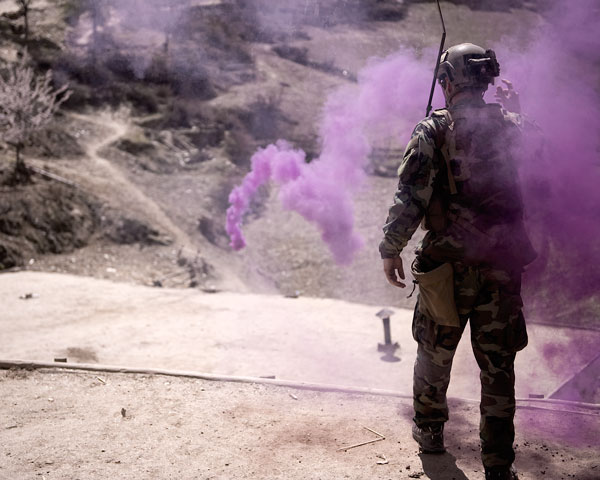
Above: "Get to the Chappa!"
I am doing my best not to dive into politics here, but often times the arguments for firearms ownership, and free citizens seeking tactical training follow the same lines. We have the luxury of choosing not to arm ourselves, or consider self defense in this country. Often times one may be in denial. We choose not to follow the path because we cannot comprehend someone using violence against us, much less being forced to use violence against others. But for the average law abiding citizen, it is never their choice when that comes. The only choice they have in the matter is to seek the best training and preparation they can in hopes of protecting their life, and the lives of their family. If you don't believe in that, then the hope is that someone will be there to step in. But as many have chosen to defend the lives of our citizens, they may not be at your house when it counts.
I went to Max Velocity Tactical with no preconceived notions other than a basic familiarity with the curriculum. Based on everything I had seen I knew the training would be to a high standard with emphasis on the basics of weapons employment, movement, and communication. No matter how many times one has done such training, proper repetition can only help you get better. I also viewed it as an occasion to test my personal gear, which I had never used solely. Much of my kit has been used piecemeal for my work but I had never used my rifle and personal kit alone for anything but square range zeroing. This proved to be beneficial but annoying at times. My personal rifle exhibited malfunctions that had never occurred on my duty weapon, like magazines not quite fitting in the mag well! I cleaned and even honed some of the surfaces in the mag well but each reload and malfunction was a unique and special experience. I believe I'm better for it but this is an annoyance that can easily be prevented and in the end can distract from training. Where as I do little personal training with my own gear, do yourself a favor and work these things out at home since you are able to do so. Common sense right? Well why am I saying it then.

I owe these discoveries to MVT's introduction of combat rifle training on the flat range for the first day. You WILL have an adequate understanding of what it takes to run your gun in the field after the first day. Any preparation you do will help though to include basic weapons handling, zeroing procedures (zero beforehand) and simple malfunctions. You may be better off with a 50 (200) meter zero as the flatter trajectory will achieve more hits on the lanes when you instinctively aim center mass. As Max and Chris point out on the range, this should put you about 2 inches low on your 25m zero. I usually aim center mass at a standard 25 meter zero target and adjust my point of impact to hit at the bottom, but within the black. It is always worth verifying your zero at known distances as results will vary. However, zeroing in this manner promotes a flat trajectory within a couple inches of line of sight out to 300 meters. When engaging at 300 you should hold a little high as reflected by your impacts on the 25 meter zero target since it represents a silhouette at 300 meters. If you just use a stick on target as we did at MVT just remember the 2 inch part. Besides, zeroing is something you can refine before your class and verify the day of.
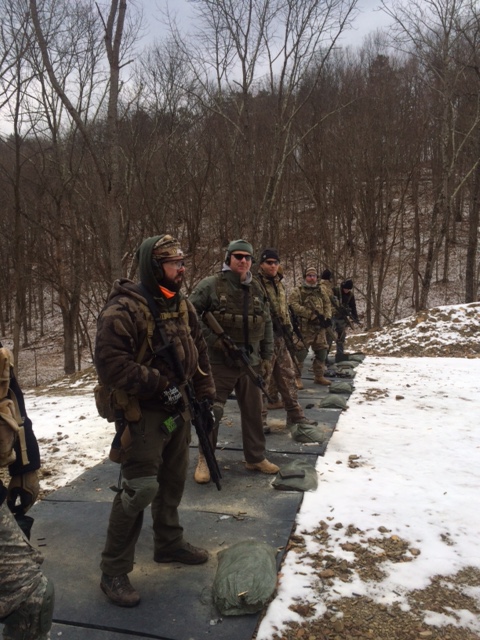
A constant and hard lesson is to always have a back up, the old adage “two is one, one is none” always applies. Get a good set of back up iron sights and zero them as well. The benefits are obvious but part of your pre-combat checks can be to verify that your red dot and back up sights are still co-witnessed and therefore zeroed. This is only theory of course unless we verify zero, but its the best that we have and you will know right away if your optic has shifted before you have to rely on it. A friend of mine likes to run fixed back up irons as he will know at any given time if his zero has been knocked off and can simply use the irons.
Weapons maintenance is another crucial piece of the puzzle. You can find a million opinions on the subject but find a system that works for you and stick to it. CLP has always worked for me as well as TW25. This class I decided to grab, of all things, a can of “Remoil” in my hasty 30 minute packing job. I had the other two lubricants but they weren't at the top of my bag. I will not disparage the product, I like it to prevent rust and such.
My only other experience was seeing an upper receiver catastrophically fail in a shoot house in a high round expenditure school. After that the instructors banned the use of “Remoil”. So of course, why wouldn't I bring that :wacko: . My weapon began having more and more stoppages the last day until I tore it down and used another product, problem solved. So I've illustrated a couple themes here: first, know your kit and what works for you. This comes from training and repetition, that's it.
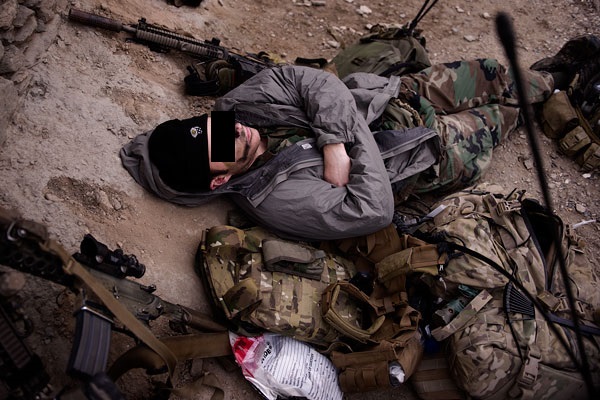
Above: an experienced soldier will tell you: sleep is the best thing to do once essential tasks are complete.
I like running my gun dirty, real dirty. This is usually due to a suppressor but don't ever have an excuse for improper weapons maintenance. Spit shined doesn't seem to work for me, nor does full on sludge so find that sweet spot. A little advice goes a long way as the more you look the more product pushing and varying opinions can complicate the process. Instead use the time on the range and in practicing the basics of marksmanship and weapons handling. Second, once you've done the leg work, stick with what you know! And if your still figuring things out, at least don't go with what you know doesn't work! Common sense right? Well Ill tell you why I'm saying it, because often times the “mindless” adherence to tasks, conditions and standards in Military training isn't mindless. Someone already did the thinking for you or learned the lesson in blood. Take nothing as gospel but do a litmus test and make sure it works for you and stick with it as small variances or corner cutting can be insidious, creeping up and causing problems at the worst possible moment. Sometimes the simplest solution is the best, or at least as great starting point.
To paraphrase a saying from “Tiger Swan”: “there is no such thing as advanced shooting skills, just the basics performed under stress” and under different situations as I like to add. I showed up to the class with my own kit, some professionally and self gained knowledge, and the same exact goals as everyone in the class. That being to hone the basics of shooting and moving. We never graduate beyond the basics. We may have jobs that require many more tasks to be performed on top of that but that doesn't change the requirement to shoot, move, and communicate at a basic level. If your job doesn't require a specialized skill set, then it is that much easier for you to focus on the basics.
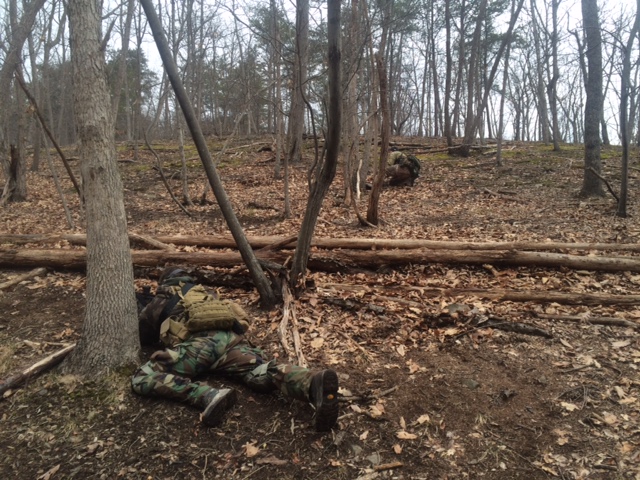 So I want to reinforce what I said in the class: that you are getting the best training you can get in light infantry tactics for the money.
So I want to reinforce what I said in the class: that you are getting the best training you can get in light infantry tactics for the money. If ever you find yourself tasked with a more complicated mission or training scenario then break it down into its basic individual and collective tasks, and practice and rehearse those until you feel competent in doing what needs to be done. MVT demonstrates an excellent model for building a competent tactical team member from the ground up, for most, if not all of the situations that a dutiful Citizen would ever hope not to face, but would be prepared for should the day come.
Diligence in the basics,
Benny
More to follow on NODF…
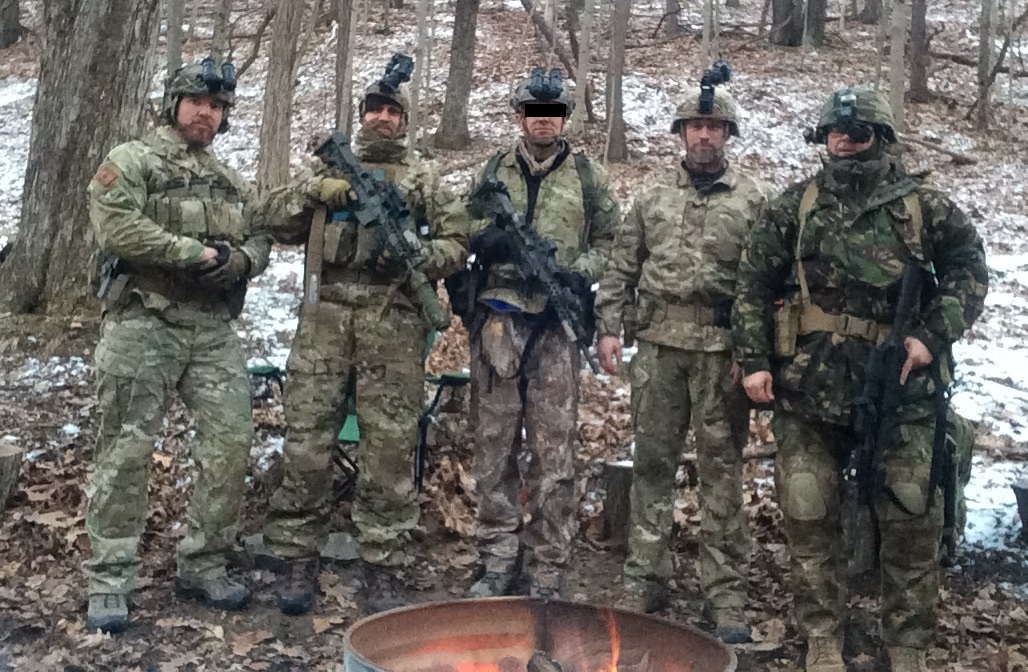
Added: Night Optical Device Firing":
If you own your own NVGs and intend to use them as a part of your kit then do your self a favor and take the NODF class. It was my first opportunity to use my own kit exclusively and it was refreshing to see that I had 90% of the same capabilities with my own kit that I do at work.
There are obvious limitiations seeing that I cannot purchase my own class 3 laser system. This is not a “show stopper” though. I was using a surefire mini scout with a vampire IR bezel and a DBAL and found that this met my needs. You lose some range with the system vs. a .gov LA-5 but for our purposes and considering the ranges you can actually PID targets you will do fine with a my setup mentioned above. The flat range portion of NODF is exactly what you need to zero and familiarize yourself with your equipment. The “night exercise” that Max has put so much work into is icing on the cake and worth the price by itself.
I didnt mention too many specifics above in my review but one thing I wanted to say is that the combination of well sighted lanes in the woods, top notch targetry, and superb instruction to match makes this a course that is a “must attend” in my book. Give MVT serious consideration if you are someone who is prepared to defend their family and their country with like minded individuals.
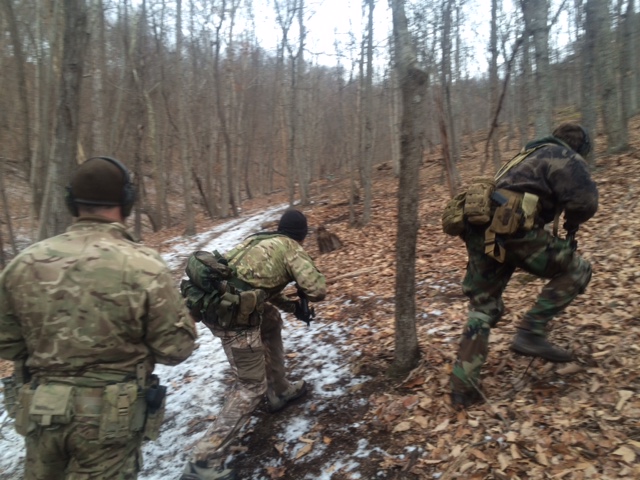
 Win a FREE Membership!
Win a FREE Membership!